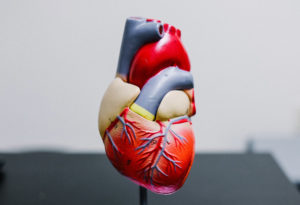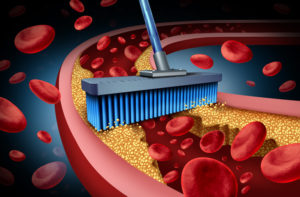Preventive Cardiology

What is Preventive Cardiology?

The Prevalence of Heart Disease
Eighty million adults are affected by heart disease (one in three people) and twenty-five percent of deaths in the United States are due to heart disease. From 1999 to 2009, the cardiovascular disease death rate declined by 33%. However, cardiovascular disease still takes the lives of more than 2,150 Americans each day, an average of one death every 40 seconds, and is still the number one cause of death. In 2010, coronary artery disease alone was projected to cost the United States $108.9 billion. Most heart attacks occur because of atherosclerotic plaque but, unfortunately, atherosclerosis often remains asymptomatic, delaying treatment until too late. Prevention is key!
This number one killer is still largely preventable. One reason heart attack and stroke are still so prevalent is due to the lack of preventive cardiology training given medical providers worldwide (lack of investment). Preventive cardiology may be described as the aggressive early detection and treatment of cardiovascular conditions such as coronary artery disease and hypertension. Since most atherosclerosis is asymptomatic imaging allows us to detect it in early, preclinical stages, allowing for early intervention.
The current standard of care does not include detection of asymptomatic atherosclerosis. Instead traditional risk factors are evaluated, the patient is put into a low, medium, or high-risk category and lipid targets are determined by the clinician depending on the category. Thus, coronary artery disease is not detected early. We know that early detection of cancer saves lives. The same is true for atherosclerosis.
A one size fits all approach based only on guidelines leaves some patients over treated and others painfully under treated .
A report based on guidelines initiated by the American Heart Association examining 136,905 patients hospitalized with the diagnosis of CAD revealed the inadequacy of LDL cholesterol HDL cholesterol and triglycerides in identifying high risk patients. The report showed that 77%, 45% and 62% of the patients had normal LDL, HDL and triglycerides respectively. This study confirmed prior suspicions suggesting poor prediction using traditional risk factors (in particular lipids) thus highlighting the shortcomings of existing national cholesterol education program guidelines. This should not be surprising since atherosclerosis is primarily an inflammatory condition and cholesterol is not the sole cause. There are many risk factors.
We help our patients detect treat and reverse or stabilize atherosclerosis. By doing this the majority of heart attacks are prevented.
Dr. Steve Parcell’s Story
Like most of us, I have a personal story that got me into this. I grew up in Simsbury, Connecticut, in the 1960s and 1970s. My father died tragically on May 11, 1974, at the age of 47 while on a family canoe trip. Although the stated cause of my father’s death was drowning, the coroner believed that a heart attack is what prevented him from swimming to shore like the rest of us. While we were attempting to navigate through a series of bridge pylons, our canoe capsized and the whole family was immersed in the frigid Spring waters. In May, the water in Connecticut is still very cold. Sudden immersion in cold water causes a dramatic rise in heart rate and blood pressure, which can put too much stress on a weak system and result in a stroke or heart attack. I’m sure the cold water was too much for my dad’s heart. He had a high-stress job as a production manager at a Hartford, Connecticut, television station at the time. He was also overweight, had high cholesterol (hypercholesterolemia), got zero regular exercise, and had high blood pressure (hypertension).
This accident happened on my 12th birthday, which happened to be Mother’s Day that year. The accident pitched my family into chaos. We had to sell our house, my mom started working full time as a secretary, and life became difficult. I was shipped off to boarding school in rural Connecticut for three years. After graduating from New England College in 1986, I experimented with different careers until I enrolled in the University of Vermont’s Post-Baccalaureate Premedical Program. I entered Bastyr University (a naturopathic medical school) in 1997 and graduated in 2002. While at Bastyr I worked for a research department funded by the National Institutes of Health. I also worked as a research assistant for the American Institute for Biosocial and Medical Research. After graduation, I did a two-year paid internship with a prominent MD.
While at my internship I saw the benefits of aggressive prevention on heart disease patients and noticed that reductions in coronary hard plaque were possible. Around this time I underwent my first electron beam computed tomography scan (EBCT), more popularly known as an EBT heart scan.
The EBT is a sophisticated computerized X-ray that accurately identifies and quantifies the presence or absence of calcium deposits in and around the coronary arteries. The calcium deposits indicate mature plaque, also called calcified plaque. Calcified plaque is what causes “hardening of the arteries.” Strong statistical correlation exists between the presence of these calcium deposits and the presence of coronary heart disease.
My first test showed that I was in the 91st percentile for my age. This means that only 9 percent of 42 year-old-men (my age at the time) had a worse score than mine. Conversely, 90 percent had a better score. I was shocked. Heart disease is the number one cause of death worldwide and in the U.S. and I was being compared to my fellow Americans. Americans have even a higher risk of heart attacks compared to most other countries. At the time my cholesterol numbers were pretty good, I exercised six to eight hours a week, did not smoke, and ate an almost perfect diet. At this point I began rigorous study into the prevention and treatment of heart disease and, more specifically, the reversal of coronary plaque. I have been tracking my plaque since then and have seen it reverse direction.
I do the same for all my patients, with much better than average results.
Learn more about Dr. Steve Parcell
Lipid Management

Low-density lipoprotein (LDL) is the “bad” cholesterol that most of us have heard about. While elevated LDL is a risk factor for heart attack, LDL alone is not a good predictor of an individual’s risk. Because of this problem, more-sensitive cholesterol tests have been developed which look at cholesterol particle size, number, and density. Although cholesterol abnormalities contribute to atherosclerosis there is really more to the story. For example, LDL particle number is the more important risk indicator.
An issue that feeds the cholesterol controversy is the fact that LDL levels in populations both with and without CAD significantly overlap. In the Framingham Heart Study, for instance, 80 percent of heart attack patients had cholesterol levels similar to those who did not experience a heart attack; and 50 percent of the heart attack victims had normal cholesterol (Castelli, 1996).
Low-density lipoprotein cholesterol (LDL) is a major contributor to CAD, but not the only cause. Risk of getting CAD can be reduced by approximately 20% to 40% if you can get your LDL down to optimal range. This sounds good until your realize that we still have 60% to 80% available for further risk reduction. This is where the benefits of raising HDL come in. Cardiac risk is thought to drop by two to three percent for each 1 mg/dL increase in HDL.
High density lipoprotein (HDL) is the “good” cholesterol. It’s considered good because it facilitates reverse cholesterol transport (RCT). Low HDL cholesterol is an important risk factor for CAD. Anyone with atherosclerosis should be interested in RCT, which means taking cholesterol away from where you don’t want it and metabolizing it. HDL helps remove cholesterol from arteries in the early stages of disease and from established atherosclerotic plaque. This is why having low HDL is a risk factor and also why raising HDL to as high a level as possible helps reverse plaque! The importance of raising HDL cannot be overstated, but is often understated in conventional medicine. Data shows that raising HDL gets similar or even better results than lowering LDL.
